
Art | Resources
Hunker Bag Co.
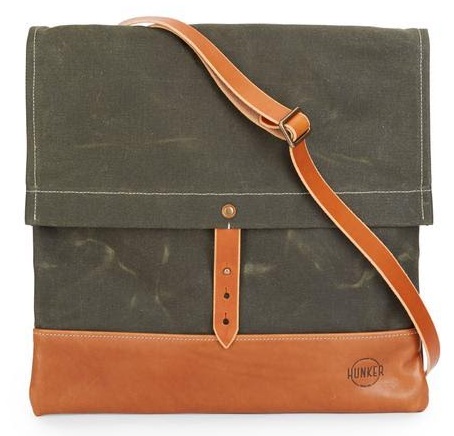 Handmade bags designed from locally and ethically sourced, high quality, Horween leather, TexWax waxed canvas and all brass hardware. Men’s travel bags, briefcases, clutches, everyday bags, totes, messenger bags, wallets, weekend bags and backpacks for both men and women. “Hunker Bag Co. bags are made in small batches and are luxurious, functional, unique and trendy. In addition, they are designed to last a lifetime and to grow in character and meaning for their owner over the years. Ever-stylish, when you purchase a Hunker Bag Co. product, you can be assured of a bag that will be able to withstand the rigors of daily use.”
Handmade bags designed from locally and ethically sourced, high quality, Horween leather, TexWax waxed canvas and all brass hardware. Men’s travel bags, briefcases, clutches, everyday bags, totes, messenger bags, wallets, weekend bags and backpacks for both men and women. “Hunker Bag Co. bags are made in small batches and are luxurious, functional, unique and trendy. In addition, they are designed to last a lifetime and to grow in character and meaning for their owner over the years. Ever-stylish, when you purchase a Hunker Bag Co. product, you can be assured of a bag that will be able to withstand the rigors of daily use.”
TomatoFest
 Select from 600 varieties of heirloom tomatoes. I used to grow heirloom tomatoes when I lived in California and they are amazing. ” the best tasting, heirloom tomato seeds from around the world. We’ve collected what are considered to be the most valued heirloom tomato seeds from many different regions and family farms, to grow and harvest these tomato seeds to share them with you. All TomatoFest heirloom tomato seeds are CERTIFIED ORGANIC by CCOF”
Select from 600 varieties of heirloom tomatoes. I used to grow heirloom tomatoes when I lived in California and they are amazing. ” the best tasting, heirloom tomato seeds from around the world. We’ve collected what are considered to be the most valued heirloom tomato seeds from many different regions and family farms, to grow and harvest these tomato seeds to share them with you. All TomatoFest heirloom tomato seeds are CERTIFIED ORGANIC by CCOF”
Get Out and Sweat This Summer—It Will Remove Toxics From Your Body
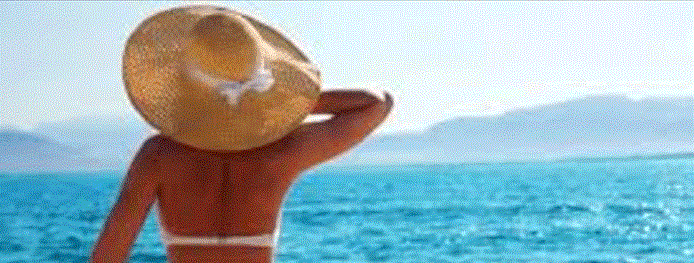
GreenMedInfo has been tracking studies that show the effectiveness of sweating to remove toxic chemicals from the body.
Ordinarily you would need to sit in a sauna to sweat, but it’s summer. Go outside. Sweat is sweat. It’s good for you.
GREEN MED INFO: 4 Reasons to Break a Sweat (Solvents, Phthalates, Metals, BPA
GREEN MED INFO: Research Confirms Sweating Detoxifies Dangerous Metals, Petrochemicals] (Metals)
GREEN MED INFO: Confirmed: Sweating Removes Deadly Chemicals From The Body (Flame Retardants)
Wool for Building Insulation

Question from Joanna
Hi Debra,
I’m building an addition to my home and I’m looking for the safest insulation.
I found this insulation that is basically sheep’s wool.
What do you think of this?
Debra’s Answer
I love it!
I love wool anything.
About twenty years ago I was remodeling the kitchen of my little-cabi- in-the-woods in Northern California and when I pulled the interior walls off, it was full of newspaper from 1930!
I needed something for insulation and I thought of sheep’s wool.
I just drove up to Shepherd’s Dream (which at the time was about an hour’s drive north of where I lived) and got the same organic wool that was stuffed in my mattress. It was perfect. And it just felt good to know I had wool in my walls. Like my house was cuddling me and keeping me warm.
This wool insulation looks fine to me. I’ve seen some others that mix wool with various other materials but Havelock Wool is 100% wool (with a small amount of natural boric acid added as an insect repellant). Their wool is sourced in New Zealand where sheep roam pastoral lands and eat grass in serene settings. It is blended and washed there before being shipped to their manufacturing facility in Nevada where they make both loose-fill and batt form insulation.
Here are some of the benefits they list on their website:
- ALL NATURAL – Wool insulation is entirely renewable and sustainable
- MOISTURE CONTROL – Wool naturally manages moisture levels against 65% relative humidity
- FIRE RESISTANT – Wool is inherently known to extinguish after smoldering
- LONG LASTING – Extensive useful life
- NO HARMFUL CHEMICALS – Natural characteristics allow our insulation to be devoid of harmful chemicals
- NOISE REDUCTION – Wool creates acoustic advantages in minimizing airborne sound
- DISPOSAL – Wool insulation can be composted at the end of an extended useful life
- INSTALLATION – Blow-in and batts are installed like other mediums but with no protection required
I’m happy to see this product available. It’s a totally natural, renewable biodegradable alternative to toxic insulation materials.
Wise Choice Market
 “Delicious traditional foods delivered to your door.” Everything you need for an organic real foods diet: organic bone broth, fermented vegetables, grass-fed raw milk cheeses, wild seafood, healthy fats, soaked nut nutters, gluten-free breads, and more. Nutrient-dense read foods. No GMOs.
“Delicious traditional foods delivered to your door.” Everything you need for an organic real foods diet: organic bone broth, fermented vegetables, grass-fed raw milk cheeses, wild seafood, healthy fats, soaked nut nutters, gluten-free breads, and more. Nutrient-dense read foods. No GMOs.
Safe Shoes for Children

Soft Star Shoes
Question from Amie
Hi Debra,
I found out my 3 year old daughter is allergic to carba mix, supposedly this is not in latex according to her dermatologist although I’m not so sure. It’s so difficult to find her shoes and it breaks my heart.
Mini Melissas are made out of PVC and I’m hoping that it’s a good option for her. Otherwise I have no idea what she can wear.
Is PVC OK?
Debra’s Answer
First, for anyone reading who does not know what “carba mix” is, It’s a mix of chemicals are used as fungicides and pesticides and also in the manufacture of many rubber products. The mixture is used for allergy testing. More info on carba mix, read this.
Here’s the short answer of why PVC is not a good choice. PVC is made from a chemical called vinyl monomer which causes cancer. To make it soft there are phthalates added. Six pthalates have been banned for use in a list of children’s products (children’s shoes are NOT on the list*). Lead is also added as a stabilizer.
So while your daughter may be allergic to these pesticides and fungicides, PVC shoes can cause cancer. To me that’s not a better choice.
Shoes are one of the products that are most toxic and most difficult to find alternatives for.
Here are some of the least toxic shoes for babies and kids I’ve found. You’ll need to check with each about the carbs mix specifically.
I’ve created a new category on Debra’s List for Babies & Kids Shoes. Take a look.
Tick Tock Naturals
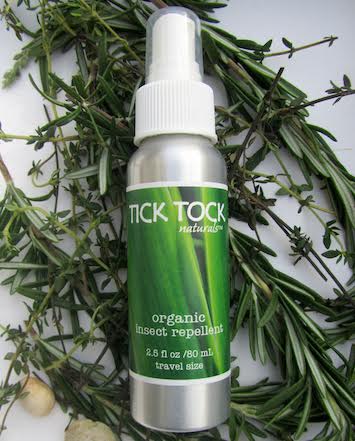 DEET-free organic insect repellent, “safe for everyone to use for bug bite prevention.” Active Ingredients: Lemongrass oil, eugenol. Inactive Ingredients: Grapeseed oil. Concentrated formula—one travel size bottle can offer one person protection for up to one year.
DEET-free organic insect repellent, “safe for everyone to use for bug bite prevention.” Active Ingredients: Lemongrass oil, eugenol. Inactive Ingredients: Grapeseed oil. Concentrated formula—one travel size bottle can offer one person protection for up to one year.
Rowan Tree Botanicals
 Therapeutic organic herbal formulas for dental care, including tooth remineralizing toothpaste, oil pulling mouthwash, oil pulling oil with comfry, and an ebook on how to heal cavities and reverse gum disease. Also remineralize toothpaste formula for children. “Our traditionally crafted products contain only ingredients which are certified organic, ethically wild-harvested or grown organically by Sarah Wildroot, founder of Rowan Tree Botanicals. We make our herbal remedies in small batches by hand to preserve the potency, integrity and purity of the products that we offer here, for the well being of you and your loved ones.”
Therapeutic organic herbal formulas for dental care, including tooth remineralizing toothpaste, oil pulling mouthwash, oil pulling oil with comfry, and an ebook on how to heal cavities and reverse gum disease. Also remineralize toothpaste formula for children. “Our traditionally crafted products contain only ingredients which are certified organic, ethically wild-harvested or grown organically by Sarah Wildroot, founder of Rowan Tree Botanicals. We make our herbal remedies in small batches by hand to preserve the potency, integrity and purity of the products that we offer here, for the well being of you and your loved ones.”
Lead in Ceramic Tile
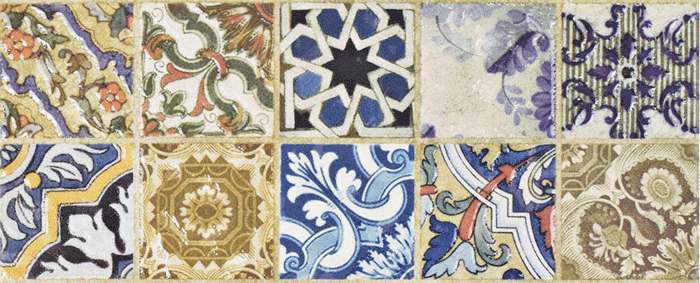
I’m posting this long correspondence because it has many links from this reader about lead in ceramic tile and various concerns.
The bottom line is: there seems to be a lot of lead in virtually all ceramic tile. It may pose a dust hazard when cutting, but is not a toxic exposure when touched or mounted on the wall. It does not emit lead into the air.
Question from Victoria
Hi Debra,
Hoping you can help us!
We have a question regarding ceramic versus marble tile. Hoping you can provide us with your thoughts!
My husband and I are planning on installing our kitchen backsplash this weekend.
We were hoping to choose plain white, made-in-the-USA 3×6 subway tile:
www.homedepot.ca/en/home/p.finesse-3-inch-x-6-inch-ceramic-modular-wall-tile-in-white.1000662664.html
We had specifically chosen the manufacturer Daltile based on their “Lead free certification” letter from 2013 found on their website: www.daltile.com/upload/greenworks/Lead-Free_Certification_2013.pdf
We have a lot of backsplash to install, from countertop to ceiling. The area around two large corner windows will require a SIGNIFICANT amount of cutting the tile to size, so we are very concerned about tile dust/debris generated while cutting the tile.
We felt confident choosing Daltile because they claim to not add any lead to their tile. Although they advise, by nature, there may be trace amounts. This “lead-free” claim is important to us as we have a toddler and we are currently trying to get pregnant.
However, upon further research, we came across a 2015 article from the Envionmental Information Association regarding problems associated with lead-testing ceramic tiles. Therefore they conclude it reasonable to assume all ceramic tiles have high levels of lead, if they are to be disturbed/cut. www.eia-usa.org/images/downloads/Newsletters/may15newsletter.pdf
In addition, Lead Safe America foundation advises to avoid choosing man-made ceramic tile. http://leadsafeamerica.org/tile
We are now concerned about using ceramic tile and are leaning towards using marble tile. We cannot seem to find any info online regarding lead/heavy metals/contaminants, etc in marble tile (although surely there must be at least trace amounts?..)
Do you know if marble would be a better, safer choice? Especially when having to cut and install significant quantities of tile?
Or would the subway tile in question be just as safe? We really want to pick the safest option for our toddler.
Please let us know your thoughts!
Thank you kindly for you help! 🙂
Debra’s Answer
Here are my thoughts.
First we live in a world where nothing is 100% without some toxic element. So it’s like fire or crossing the street. We do things to minimize risk.
In the past I and many others have considered manmade ceramic tile “safe” because it doesn’t outgas anything. Now that we are also considering heavy metal exposure we find that ceramic tile MAY contain lead.
So if Daltile says they do not add lead, then the only lead in that tile is whatever lead is occurring in the raw materials. Lead is an element of the earth. It cannot be eliminated 100%. So our challenge is to eliminate ADDED lead.
The Lead Safe America post seems to me to be saying that the biggest concern is from demolition and cutting, NOT from having the tile on a backsplash.
This tile will NOT emit lead into the room.
So it would be fine to install on a backsplash. I would CUT it outdoors. You don’t want to create dust from cutting indoors.
Note that her recommendations say don’t put food on the tile (which would absorb into the food and then you would eat it), use plates, etc, but she does NOT say do not touch the tile. Skin contact apparently is not a problem. I’ve seen this from other sources as well. So it’s OK to touch the tile.
Just as an aside, my whole kitchen and bathroom has this tile up all the walls 8 feet.
The conclusion seems to be that we should assume all manmade tiles contain lead. But as I outlined above, just because they contain lead doesn’t mean they cannot be used safely.
Marble is a natural material. It is not manufactured. Therefore lead would not be added, but it would contain any trace amounts of lead that occur naturally.
I would pick either and cut it in an area away from your toddler, where the dust would not go throughout the house via your HVAC.
Victoria’s Reply
Hi Debra,
Thank you so much for your reply! Your information and advice is greatly appreciated!!!
My concern is not the tile itself, but of the dust/debris generated when cutting large amounts of tile.
My hubby will cut the tile in the backyard, but even then, I worry about the tile debris/dust accumulating, possibly even contaminating, the deck, the playsets, the grass and soil my toddler plays in. Not to mention hubby’s clothing, dog paws, wind, etc, dragging it inside. I understand it doesn’t take very much lead to dust to contaminate an area.
This construction forum thread regarding lead in tile provided some interesting info:
http://forums.jlconline.com/forums/forum/jlc-online-expert-forums/ceramic-tile/52025-lead-in-tile
“One contractor I followed actually ripped out old tile that didn’t have lead in them and installed tiles that did have lead in them.
I checked where he dump the water from the tile saw and the soil was way over the clearance levels for lead content.
Dry cutting with a grinder produced the same results.”
The same forum thread mentioned an amazing field report that provided a lot of interesting information
http://ctioa.org/wp-content/uploads/2016/10/fr79.pdf
“The tile installer needs to take precautions to avoid the toxic effects of the lead and he needs to be sure that he does not carry tile dust home on his clothes or in his truck. Bob Knowles, a professional lead risk assessor, made the importance of this clear to me. On several occasions, the New Mexico Health Department asked him to trace down the source of lead that was causing elevated levels of blood to show up in school children. In some of these cases, he verified that the lead was coming from the professional activities of these children’s parent or parents who were tile installers. The tile dust was in their pick-up trucks and it was on the clothes, which they were wearing home. The pick-up trucks were used as work vehicles and for family transportation.”
Although Daltile provides a 2013 letter on their website that advises that they do not add lead to their glaze, I am still somewhat concerned about cutting and installing ceramic tile because they advise the tile may still contain lead. Im not concerned about the tile once it is installed.
So I was thinking maybe it’s best we cut and install marble instead of ceramic tile, just for peace of mind, because I can’t seem to find anything online that mentions lead in marble as a concern (unlike ceramic tile)
I would not be concerned about lead dust from tile cutting and installation if we didn’t have a toddler/still breastfeeding/potential pregnancy, as you know the effects of lead exposure are scarily irreversible, and even low levels of lead in the young body have been shown to affect IQ. Terrifying! 🙁
Although as you mention we live in a world where nothing is 100% without some toxic element… I just wish we lived in a world where us humans were more responsible about minimizing risk and took more care to ensure not only our safety, but the safety of the next generation(s) *sigh*!
That’s why I’m so appreciative of your website, blog and the work that you do, spreading important information and knowledge to everyone. Thanks so much for doing the amazing work that you do!! 🙂
Kind regards,
Victoria & family
Debra’s Answer
Considering all of the above and your concerns, I agree that your best choice is marble.
No Feathers Please
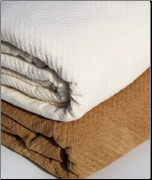 Organic cotton and wool bedding made in the USA. Cotton blankets, cotton/wool comforters, cotton/wool mattress pads, cotton sateen sheet sets, organic heat-fused cotton dust mite barriers (no plastic). Plus sleeping pillows with a variety of natural fills, including wool, buckwheat, latex, kapok, and more.
Organic cotton and wool bedding made in the USA. Cotton blankets, cotton/wool comforters, cotton/wool mattress pads, cotton sateen sheet sets, organic heat-fused cotton dust mite barriers (no plastic). Plus sleeping pillows with a variety of natural fills, including wool, buckwheat, latex, kapok, and more.






